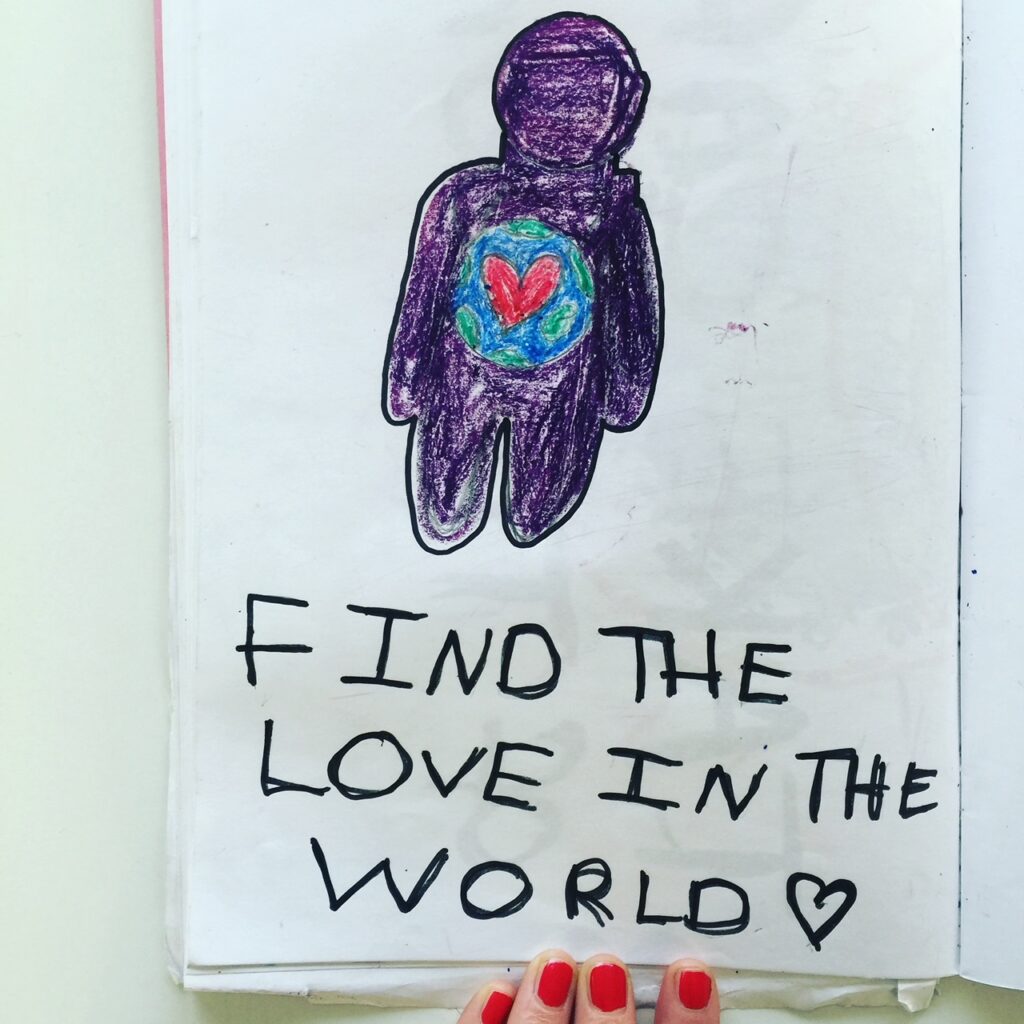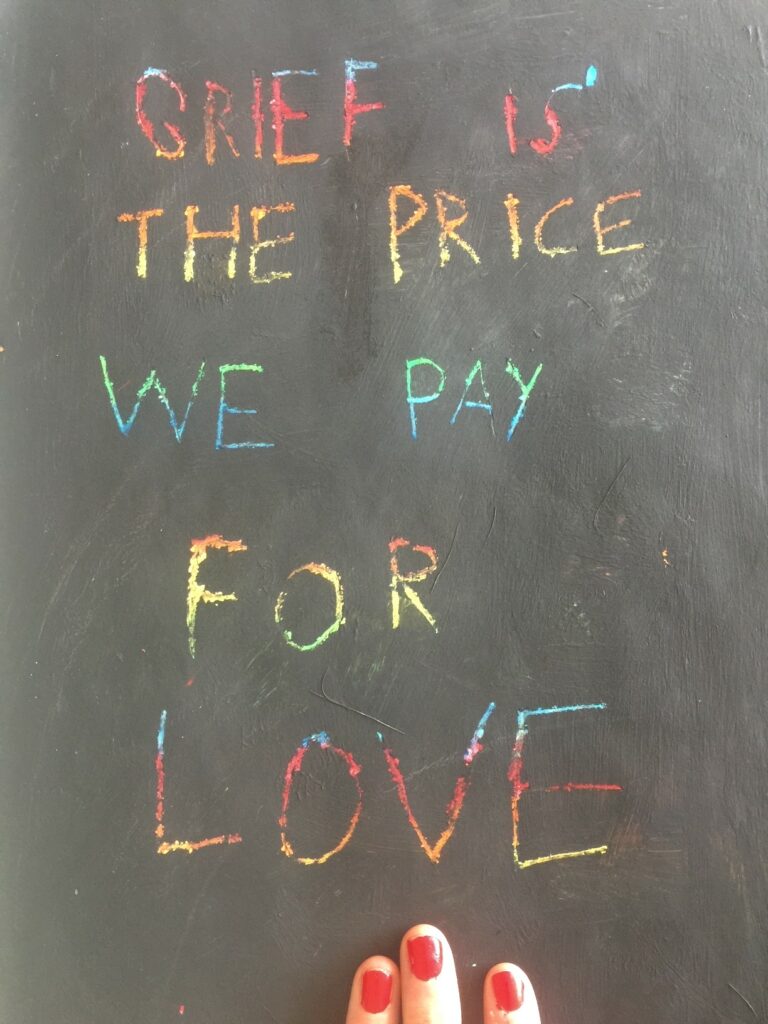My work as a multidisciplinary artist has always had a preoccupation with the intricacies of the human condition but when my family members were tragically killed in an accident in 2011, I found myself entirely consumed with grief. The decade that followed has been dominated largely by survival, and later, using my practice to explore the complexities of grief. After many years of privately filling sketch books, writing letters to my family members, and therapy, I eventually felt I had developed vital skills that I could share with the public. I began working with grieving young people, which has been a key part of my practice over the past eight or so years. Here are some creative tools and activities you might bring to kids in your life who are grieving:
1. Write letters to your person on a regular basis.
One of the key things that is missing when we lose a family member or someone who featured in our life in a daily way is a touchstone and an anchor. We long for the freedom to share our days, share the mundane and the minutiae. Writing letters is a beautiful and powerful way to continue that dialogue (which will go on throughout your life). We find ways to stay connected and to grow through our life, to share our stories.
2. Keep a sketchbook to keep conversation alive.
For 20 years, I’ve never been without a working sketchbook. I write my thoughts in there, draw, make notes, and since the loss of my family, I’ve started to record valuable lessons that I’ve learnt in life that I wish I could have shared with them. It’s a way to continue a dialogue that also provides confidence and hope as we look back on them. Grief is non-linear and full of twists and turns but every day that we engage in life, we are moving through some of the hardest experiences and learning ways to integrate the pain of loss.

3. Find daily grounding rituals.
For me, I find grounding in dancing. My sister and I loved making mix tapes, dancing out our days together and there are some iconic songs I heard for the first time with her that I will always associate with our bond. It’s my direct line to her. Now, with newer music that she could never have heard, I make playlists that I think she’d like. I imagine us dancing together, and it’s like a direct line to us and our shared life that creates a warmth and a safety in me that I can access every day. Other kids find grounding in singing, drawing, painting, storytelling, and other creative expression.

4. Create a toolkit for survival.
Often when I work with young people, we explore coping mechanisms and daily practices for living well with grief. We always work towards integrating grief, with the understanding that it will never go away but that we can find ways to welcome it in and make friends with it. We can talk about it, to talk about our person and to find a broader language together to share our experiences of loss.
A part of this is developing a toolkit for survival, where I encourage young people to explore any visual medium that feels good to them: painting, collage, printing, drawing, textiles, sculpture, in association with their experience. By documenting ways in which they have coped with their loss and sharing particular details about the person they have lost, we are able to build upon a common and collective language for the vastness of loss.
 Annie Frost Nicholson (formerly The Fandangoe Kid) is a London-based multidisciplinary artist whose work seeks to smash taboos around the nuanced complexities of the human condition. Through a curious, colorful and considered lens, Frost Nicholson’s practice looks at what it means to be alive, and her preoccupation with life, death, grief and all their permeations follows her own devastating loss of family members twelve years ago, at the age of 27. Learn more about Annie and her work.
Annie Frost Nicholson (formerly The Fandangoe Kid) is a London-based multidisciplinary artist whose work seeks to smash taboos around the nuanced complexities of the human condition. Through a curious, colorful and considered lens, Frost Nicholson’s practice looks at what it means to be alive, and her preoccupation with life, death, grief and all their permeations follows her own devastating loss of family members twelve years ago, at the age of 27. Learn more about Annie and her work.
